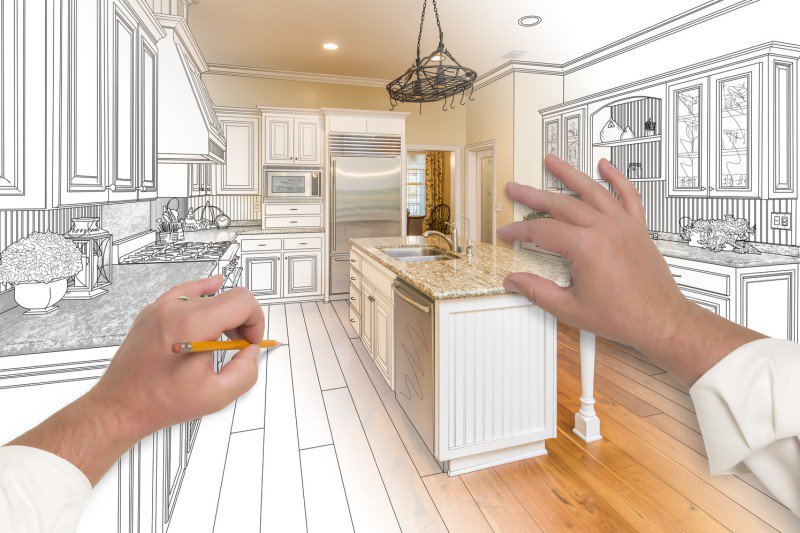Owing to the high real estate prices in Mumbai, home owners are often forced to remodel their existing homes to create additional space, instead of buying a bigger house. Now under the government’s policy of improving ease of doing business, the Brihanmumbai Municipal Corporation (BMC) is planning a proposal in the Development Control Rules (DCR), which will allow residents to make changes in their homes, without their permission.
The civic body will not take any action, if the beams and load-bearing walls on which the structure stands, are not modified. “Changes can be made, without touching the foundation of the building. However, any interior repair work that may harm the building’s structure, will not be allowed,” informed Rajesh Dholay, executive engineer, BMC.
A good move
With the civic body’s positive move, the onus will shift from the authorities to citizens. Sanjay Jain, an architect and a private consultant for co-operative societies, says, “Until now, the internal modifications in apartments, were mostly done illegally. Often, contractors would end up damaging the structural elements of the building. The civic body’s move is a welcome one. It will empower the architect to take the onus of renovation of the apartment, without the hassles of seeking the local administration’s approval.”
Any move that reduces bureaucratic hurdles, is always a welcome move, asserts Sandeep Ahuja, CEO of Richa Realtors. “This decision will cut down unnecessary obstructions, delays, red-tapism and resultant corruption, for residents. A resident is allowed to make changes, without compromising the structure of the building. Practices, such as BMC officials visiting the renovation sites and threatening to charge unnecessary penalties, will stop,” he maintains.
Utkarsh Jani, project manager, Edifice Erection Pvt Ltd, explains that “Residents can now change the layout of their homes with lighter materials (such as hollow blocks), so that direct load on the slab can be avoided. However, the layout of sunken slabs, which includes bathrooms, toilets and kitchen sinks, cannot be changed.” Experts, nevertheless, suggest that modifications should be done, only after studying the location, load, layout of the beams and columns if possible.
Problem areas
While housing societies can raise questions and also stop renovations that can affect the life and value of the building, civic activist GR Vora, is not happy with the BMC’s proposal. If the shifting of walls, etc., is permitted without prior authorisation, then, everyone will modify their flats and offices, as per their wish and requirement, Vora cautions. Residents should protest against such blanket permissions being granted. “It could prove to be disastrous to the building’s structure and could also lead to its collapse. The civic body should clarify, what can be done and what is not permissible,” Vora insists.
Rajkumar Sharma, president of the Advanced Locality Management and Networking Action Committee (ALMANAC), concurs. “People tend to overlook the dangers to structures, when renovating their home and especially commercial areas in a building. All the buildings and structures that collapsed or were badly damaged, have been due to load-bearing walls, beams and columns being removed. Therefore, such permissions need to be relaxed but not completely removed, especially for beams, columns, pillars, etc., being shifted, removed or changed,” he recommends.
What should be done?
For renovations, residents should consult an architect. Alternatively, housing societies could hire a professional architect, to keep the members from misusing these provisions. Pavan Nishad, a structural engineer, advises: “For any kind of changes in the building’s structure, a proper survey should be done in advance. Individuals and societies should now engage the services of qualified professionals, to undertake flat renovations.”
What is permitted?
- Providing guniting to the structural members or walls.
- Plastering, painting and pointing.
- Changing floor tiles.
- Repairing WC, bath or washing spaces.
- Repairing or replacing drainage pipes, taps, manholes and other fittings.
- Repairing or replacing sanitary, water plumbing or electrical fittings.
- Replacement of roof with the same material.
- Replacing the existing water-proofing treatment, without increasing the dead load.
‘Tenantable repairs’ however, shall not include:
- Change in the existing horizontal and vertical dimensions of the structure.
- Replacing or removal of any structural members of load bearing walls.
- Lowering of plinth, foundations or floors.
- Addition or extension of mezzanine floor or loft.
- Flattening of roof or repairing roof with different materials.
